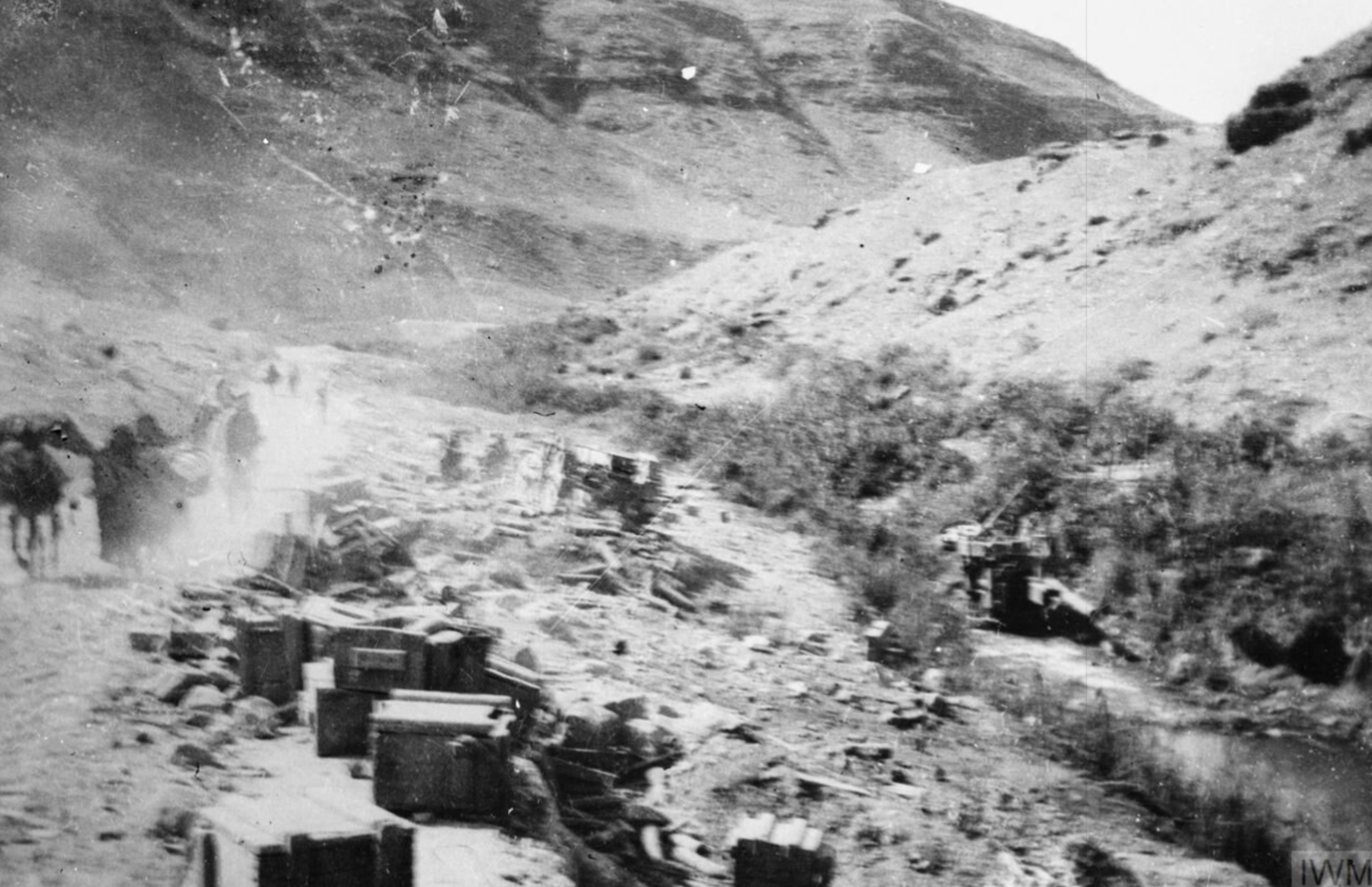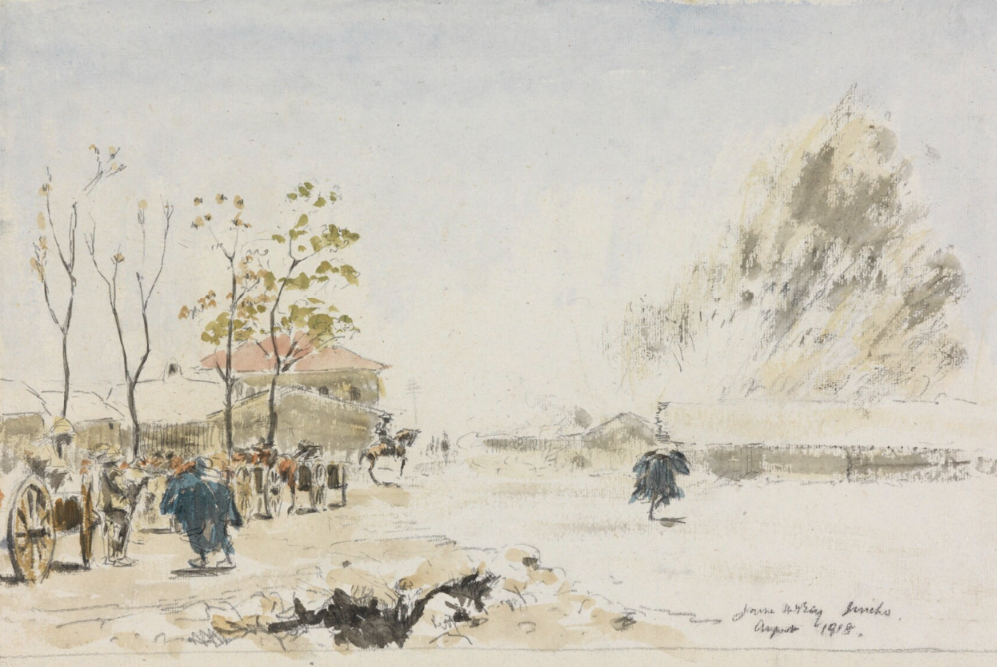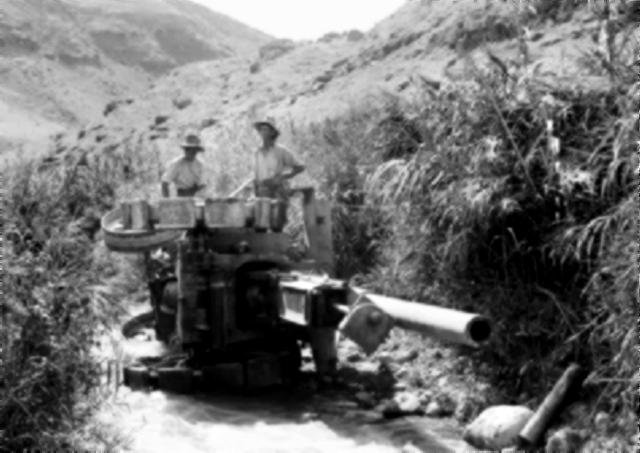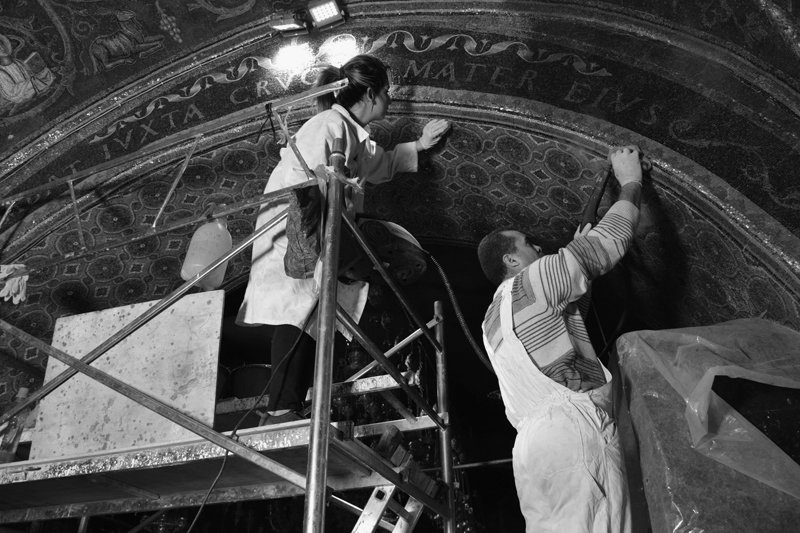
Library of Congress, Washington, D.C. 20540 USA. (n.d.). Various results of the war. ‘Jericho Jane’, large German gun. [online] Available at: https://www.loc.gov/resource/matpc.22061/ [Accessed 4 Dec. 2023].
W. T. Massey, wrote in a book called "Allenby's Final Triumph”:
"On the morning of September 18, an enemy long-range gun opened fire on the Anzac Mounted Division headquarters which were near Jericho, and afterwards shelled the town of Jericho. This gun was christened by the Anzacs 'Jericho Jane'.”

Jericho Jane', a Turkish 6 inch long range gun which was used to shell the British positions at Ghoraniyeh and Jericho at a range of about 20,000 yards from the hills on the East Bank of the River Jordan. The gun can be seen overturned in the stream Wadi Nimrin.————image source :Imperial War Museums

Jericho: A Shell from 'Jericho Jane' : a Turkish long-range gun concealed across the Jordan——image source:Imperial War Museums

Jericho Jane after capture—— image source:https://www.greatwarforum.org/topic/222911-mosaic-discovered-due-to-shelling-by-jericho-jane/
Jericho
Jericho is a city with a splendid mosaic art culture and located in the Jordan Valley, bordered on the east by the Jordan River and on the west by Jerusalem. The Times published in 1935: “ Jericho now appears to mark the site of the oldest city in Palestine and one of the earliest settled communities in the Near East. ” Biblically, Jericho was the first town the Israelites attacked under Joshua.
drawn by author
Distance between ancient Jericho and modern Jericho city centre——drawn by author
Three major water sources around ancient Jericho——drawn by author
Video Source: Author Intervie Chief Executive & Curator(PEF):Felicity Cobbing
1.Model of Hisham's Palace
Distance from major water sources in ancient Jericho——drawn by author
Traffic relations in the modern city centre of Jericho——drawn by author
Exploration
Early exploration of the Jericho site dates back to the 19th century. The Palestine Exploration Fund (PEF) was established in London in May 1865, and Jericho's Biblical status was a potentially important reason that prompted the early PEF to commission Warren, the Royal Engineer, in 1868 to carry out an early survey of Jericho. Warren's work was then continued by the Survey of Western Palestine who had a clear plan and objectives and produced many maps during the survey.
“War and archaeology were intertwined from the very start.”
——Nadia Abu El-Haj (2001). Facts on the ground : archaeological practice and territorial self-fashioning in Israeli society. Chicago: The University Of Chicago Press.
1.Warren's Exploration Range in Jericho
——drawn by author
Original plans of monasteries in the Jericho region from the Survey of Western Palestine. Courtesy of the PEF archives (PEF-DA-WS-572.7.1, 572.3, and 572.2).
2.Later archaeologists explored the extent of Jericho's
——drawn by author
Interview
Hisham's Palace
Hisham Palace was initially an Umayyad desert palace, built by the Umayyad dynasty in the 8th century. It is now an important early archaeological site in Jericho. It has been highlighted by earlier excavations and restoration of one of the largest mosaic panels in the world.
2.one of the largest mosaic panels in the world
1.Video Source: Author Video Model Source: sketchfab.com. (2022a). Hisham’s Palace - 3D model by MiddleAsset. [online] Available at: https://sketchfab.com/3d-models/hishams-palace-e4b934dd620b4248b8de5c24235dd571 [Accessed 4 Dec. 2023].
2.Video Source: Author Video Model Source: sketchfab.com. (2022). Main Mosaic Floor - 3D model by MiddleAsset. [online] Available at: https://sketchfab.com/3d-models/main-mosaic-floor-d69e78309554426dbeaa5a86d186ed5e [Accessed 4 Dec. 2023].
4.Geography of Palestine in relation to neighbouring continents——drawn by author
Original field tracing showing ancient road network in the Jericho area by the Survey of Western Palestine. Courtesy of the PEF archives (PEF-M-WS-131).
What is the impact of Jericho's many heritages on local residents of the communities?
Dispersion
Some of Jericho's cultural heritage has been dispersed.
Maitland Woods recounts:
“Close to where some ruins existed was an ancient aqueduct. The enemy guns were searching for this aqueduct and shelling heavily. One of the shells exploded, exposing a broken floor of a mosaic. … During the Turkish incursion in...1517 A.D., this church with many others was utterly destroyed.”
Original field tracing of the Jericho region from the Survey of Western Palestine. Drawn by Claude Conder on 2 December 1873. Courtesy of the PEF archives (PEF-M-WS-136).
According to a PEF article titled "Spadeologists: Australians and the Shellal Mosaic", we know about the way the ANZACs removed the mosaic:
“The cut-down shovel and non-standard entrenching tool both suggest improvised or “scrounged” gear. Other improvised digging tools include “sticks and shovels” used in the search for ancient coins. Another photograph, this time of Spr Francis McFarlane, shows a large brush, possibly a horse brush .These are rough tools and can easily destroy the mosaic. From digging to removal: chalk, glue, canvas and plaster.The work of removing the Shellal mosaic required different tools. Chalk was used to divide the mosaic into portions for removal, seen in this image held by the State Library of Queensland.“
Shellal mosaic
Mosaic fragment in St. James's Church
2
Eventually, one fragment was given to St. John's Cathedral, Brisbane. Another fragment was given to St. James's Church in Sydney and is currently placed on a wall. The shellal mosaic was given to the Australian War Memorial.
Image source:William Maitland Woods - Wikipedia
However, “whether Australia should return the Shellal Mosaic is an ethical, not legal one.” said Emeritus Professor Ben Boer from the University of Sydney's Law School.
Fortunately, there are many people in Jericho today who are doing their part to restore the mosaic.
Interview with the Mosaic Centre
Video Source: Author Interview
The Mosaic Center
The Mosaic Center is a non-profit organization founded in Jericho in 2004 to preserve and revitalize Jericho's mosaics. They conduct field trips, restore mosaics at the heritage site, and provide mosaic training workshops and lectures.These efforts not only aim to preserve traditional culture, but also to enhance the local people's own sense of cultural identity, while activating the economic empowerment potential of Jericho's cultural heritage. (The core work of the Mosaic Center was subsequently extended to historically important sites such as Notre Dame in Jerusalem, Hebron in the West Bank and the Monastery of St. George in Sebastian.)
Internationally, the Jericho Mosaic Center has partnerships with countries such as Italy, Germany, and South Korea, as well as with institutions such as Bethlehem University and the Federal Foreign Office. These collaborations foster cultural exchange and further strengthen the Center’s ability to promote mosaic art and Palestinian heritage globally. By engaging in international exchanges and cooperation, the world is made aware of Jericho's culture.
The process of creating a mosaic artwork usually consists of 4 parts, the first step is sketching a design onto a piece of paper, then Material Selection, the next is cutting tesserae, and finally the composition.
Internationalisation projects at the Mosaic Centre——drawn by author

sketching a design onto a piece of paper

cutting tesserae

COMPOSITION
Mosaic patterns
Images from: https://the-past.com/feature/the-palace-in-the-desert/
Science and technology
Hisham Palace
source: HASSAN, R., GHADBAN, S., ABOUDI, O., KHATEEB, Y., SALEM, H. and SHARKASI, N., 2015. 3D Technology As a Collaborative and Multidisciplinary Communication Tool For Studying Historically Important Sites. The Case of Jericho/Palestine. In International Congress on Landscape Ecology Understanding Mediterranean Landscapes: Human vs. Nature.

Gorgeous mosaic were used as “trophies”. But heritage should not be a treacherous medium of human oppression and rivalry, but rather a window for us to unseal ancient memories and art.
References
Wikipedia Contributors. “Jericho.” Wikipedia, Wikimedia Foundation, 29 Aug. 2019, en.wikipedia.org/wiki/Jericho.
Sparks, R.T., Finlayson, B., Wagemakers, B. and Briffa, J.M. (2020). Digging Up Jericho: Past, Present and Future. [online] JSTOR. Archaeopress. Available at: https://www.jstor.org/stable/j.ctvwh8bss.
Nadia Abu El-Haj (2001). Facts on the ground : archaeological practice and territorial self-fashioning in Israeli society. Chicago: The University Of Chicago Press.
Ariotti, A. (2004). A Missing Piece Found: Tracing the History of a Mosaic Fragment at the Church of St. James from Jericho to Sydney and Back Again. www.academia.edu. [online] Available at: https://www.academia.edu/9368628/A_Missing_Piece_Found_Tracing_the_History_of_a_Mosaic_Fragment_at_the_Church_of_St_James_From_Jericho_to_Sydney_and_Back_Again.
Elkhoudary, Y. (2023). Spadeologists: Australians and the Shellal Mosaic. [online] The Palestine Exploration Fund. Available at: https://www.pef.org.uk/spadeologists-australians-and-the-shellal-mosaic/ [Accessed 4 Dec. 2023].
Taylor, Andrew. “Questions Raised over “Looted” Mosaic.” The Sydney Morning Herald, 13 Aug. 2011, www.smh.com.au/national/questions-raised-over-looted-mosaic-20110813-1irra.html.
Magazine, M. (2022). The Palace in the Desert | The Past. [online] the-past.com. Available at: https://the-past.com/feature/the-palace-in-the-desert/.
Wikipedia Contributors (2023). Hisham’s Palace. [online] Wikipedia. Available at: https://en.wikipedia.org/wiki/Hisham%27s_Palace.
Anon, (n.d.). Mosaic Centre Association | MOSAIC PRODUCTION. [online] Available at: https://mosaiccentrejericho.com/method-of-production/ [Accessed 4 Dec. 2023].
W. T. Massey(n.d.). Allenby’s final triumph - Catalogue | National Library of Australia. [online] Available at: https://catalogue.nla.gov.au/catalog/1352749 [Accessed 4 Dec. 2023].


























